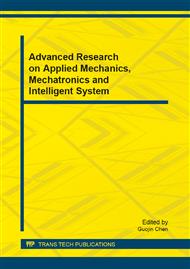p.3
p.8
p.15
p.19
p.23
p.27
p.31
p.37
The Optimization Design of the Planing Vessel's Channel Parameters Based on the CFD Technology
Abstract:
Due to the special hull shape of the catamaran planing vessel, the shiplines optimization design and the hydrodynamic performance prediction of the catamaran planing vessel are mainly carried out by model tank tests and the empirical formula at present. The numerical prediction method of the hydrodynamic performance of catamaran planing vessel has been a big difficulty for a long time. In this paper, the influence of the key channel design parameters on the catamaran planing vessel hydrodynamic performance is studied based on the CFD technology. Some beneficial conclusions are obtained which is helpful for the optimization design of catamaran planing vessel. The work of this paper provides a numerical research method for the optimization design of the catamaran planing vessels hull.
Info:
Periodical:
Pages:
15-18
Citation:
Online since:
July 2013
Authors:
Price:
Сopyright:
© 2013 Trans Tech Publications Ltd. All Rights Reserved
Share:
Citation:


